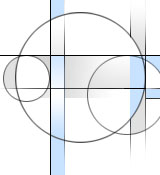





Peter Gröpper from the European Space Technology Center in the Netherlands wrote:
This new book is fascinating. In unusual depth it covers the main areas of astronautics. While classical books, dealing with the core subject "how to move in space", usually exhaust themselves with a chapter on rocket propulsion, Schlingloff's book goes much further. After a very welcome description of the Solar system and the space environment the author gives a thorough introduction into the physics and chemistry of rocket propulsion. He then presents the state of the art in space transportatioin: actual launch systems and their major parameters. And how to do the right thing with this state of the art - a surely non-trivial question - that is explained in detail in the following chapters, which deal with spacecraft trajectories, orbit optimization and attitude stabilization. The chapter, which then follows, is also of particular importance: Launcher Dynamics. Optimization of rocket ascent trajectories, ground based or airborne, orbit optimization for planetary missions, the whole range from low(est) to high thrust, reentry maneuvers - nothing is left without being dealt with in depth. No wonder, by the way - Dr. Schlingloff is the brain behind SKYNAV, which is used in space industries and space agencies for the calculation of laucher trajectories. Astronautical Engineering is, indeed, a thorough introduction to the technology of spaceflight.
The language of the book is clear and practical. Schlingloff does not try to attract the reader with a statement like "maths is not needed". In contrary, he expects a solid graduate level knowledge of mathmatics and the reader will soon understand, that this is needed. But the reader, having read and understood this book, can also claim, that he now knows, what spaceflight is about.
Peter Berlin from Sweden, author of the book "Satellite Platform Design" ( Berlinspace @ cs.com ) wrote:
A most informative, comprehensive and accessible book. The author is able to communicate effortlessly his vast knowledge of astronautics to the reader, combining facts and figures with refreshingly strong, well-informed opinions.
The balance between narrative and theory is excellent, allowing the reader to garner an intuitive understanding of each subject before being thrown into the mathematical deep end. The equations have been chosen so as to deepen the reader’s understanding of the physics involved, rather than to serve as instant recipes for back-of-the-envelope calculations.
The fact that the book has been written by a single author ensures continuity between the chapters, in contrast to the often disjointed contents of compiled books...
